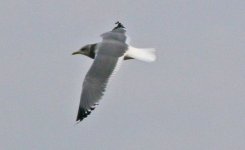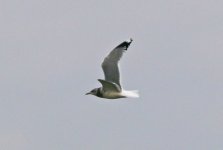I saw this gull today over our local pond. I think it has to be Common Gull, but if someone could confirm, I'd be grateful.
I don't have a dedicated gull book, but the black-ish collar doesn't appear in the Japan books, including the photo book, that I have (but it doesn't appear for anything else, either). Is this collar a winter or an age feature?
Thanks for any comments.
I don't have a dedicated gull book, but the black-ish collar doesn't appear in the Japan books, including the photo book, that I have (but it doesn't appear for anything else, either). Is this collar a winter or an age feature?
Thanks for any comments.






